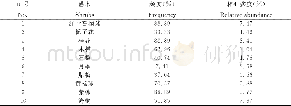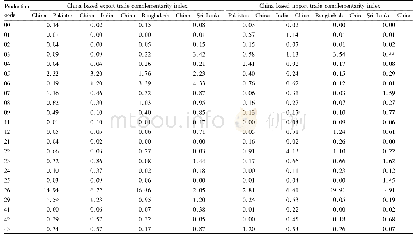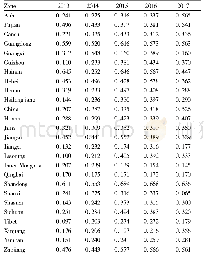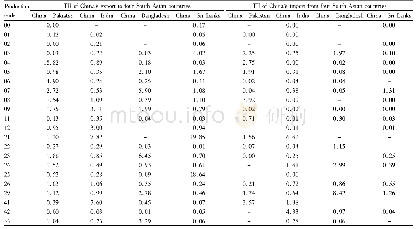《Table 4 The significance of the common agricultural and livestock products trade in 2014 in compens
 提示:宽带有限、当前游客访问压缩模式
提示:宽带有限、当前游客访问压缩模式
本系列图表出处文件名:随高清版一同展现
《基于生态承载力视角的中国与“一带一路”国家农牧产品贸易流特征(英文)》
When there is an ecological deficit,the region is importing biocapacity through trade or liquidating regional ecological assets,or it is emitting wastes into a global commons,such as the atmosphere.For some developed countries which belong to the“scissors”type,ecological deficits can be alleviated through industrial restructuring,energy conservation,emission reduction,or international carbon trade.Therefore,the trade curve of such countries changes from net exports to net imports,and net imports continue to increase,but the growth rate may decrease in the future.As shown in Fig.1d,among the scissors-type countries,the overload rates of Asian countries generally increase,while those of eastern European countries decrease.For underdeveloped countries,however,overload conditions are often difficult to contain or convert from surplus to overload because of population,political,and economic conditions,industrial structures,or environmental governance awareness.In the“wedge”type countries with environmental degradation and resource depletion,the raw material export trade will be greatly reduced and imports of agricultural and livestock products will increase,resulting in a decrease in net export volume and even a shift to net imports.Most of the“descent”type countries were classified as being the least developed,which may lead to a volatile trading market(Fig.12d).
| 图表编号 | XD003630500 严禁用于非法目的 |
|---|---|
| 绘制时间 | 2019.11.30 |
| 作者 | 靳茗茗、徐增让 |
| 绘制单位 | 中国科学院地理科学与资源研究所、中国科学院大学、中国科学院地理科学与资源研究所 |
| 更多格式 | 高清、无水印(增值服务) |
查看“Table 4 The significance of the common agricultural and livestock products trade in 2014 in compensating for the ecologi”的人还看了
-

- 表2 居住小区灌木频度及相对多度Table 2 The frequency and relative abundance of species on common shrubs in living quarter
-

- 表1 居住小区乔木频度及相对多度Table 1 The frequency and relative abundance of species on common arbors in living quarter
-

- Table 6 Complementarity index of agricultural products trade between of China and four South Asian countries in 2016





